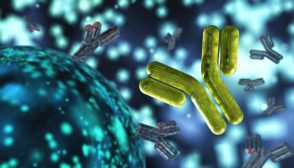Definition
noun, plural: megakaryoblasts
A precursor cell that develops into a promegakaryocyte during thrombopoiesis
Supplement
Hematopoiesis is the process of forming new blood cellular elements in vertebrates. In this regard, thrombopoiesis is a hematopoiesis leading to the formation of thrombocytes. It begins with a multipotent stem cell, a hemocytoblast, which gives rise to a common myeloid progenitor cell. The progenitor cell, in turn gives rise to colony forming unit (particularly, CFU-Me, which is also referred to as CFU-Meg or CFU-Mega) fated to become megakaryocytes. The CFU-Me gives rise to megakaryoblasts. A megakaryoblast is a committed progenitor cell that gives rise to promegakaryocytes. In the thrombocytic series, the megakaryoblast is at the beginning of the series, prior to promegakaryocytic stage.
The megakaryoblast is a cell that ranges from 8μm to 30μm in size. It has a large nucleus with an oval or a round shape. Its nucleus is about three to five times the size of its cytoplasm. There are several nucleoli present in the nucleus.
Word origin: Greek mégas (“large”) + Greek karuo– (“nut”) + Greek blastos (“germ“, “sprout”)
See also:
- thrombopoiesis
- common myeloid progenitor cell
- promegakaryocyte
- thrombocytic series
Related form(s):







